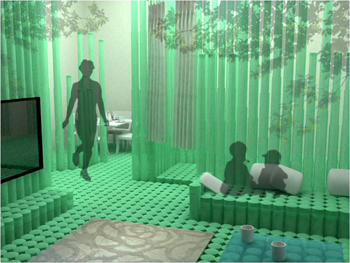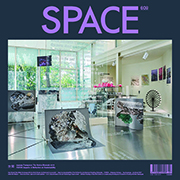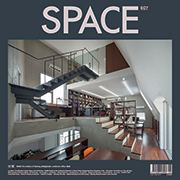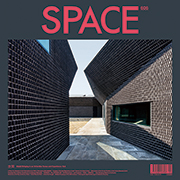08' the 2008 th space prize for international students of interior design
- IT + Ecology Project -
SUBJECT
IT + Ecology Project
JURY REPORT
Cody Choi_ Artist
The reason why the subject of the Space Prize for International Students of Interior Design has been selected as 'IT+Ecology Project' was to integrate ecology and IT into the concept of ‘space,’ which has always been dear to us.
There have been difficulties with interpreting IT architectural terms, as students, more than we expected, were not familiar with IT. As a result, it was pity that there were no clear answers to ecology and IT in most works. However, despite the fastidious subject, there were a few excellent works that surprised me.
‘Seed,’ the work that has demonstrated a certain harmony between the interior and the exterior and has proposed an experience of another ecology, has succeeded in presenting an architectural possibility beyond our expectation. That this public subscription has provided an opportunity to share the concerns of IT and ecology has been well received, indeed.
GRAND PRIZE
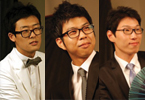
Kim Keun-tae,
Lim Bum-joo,
Park Boo-young
Kookmin University
SYSTEM ISLAND
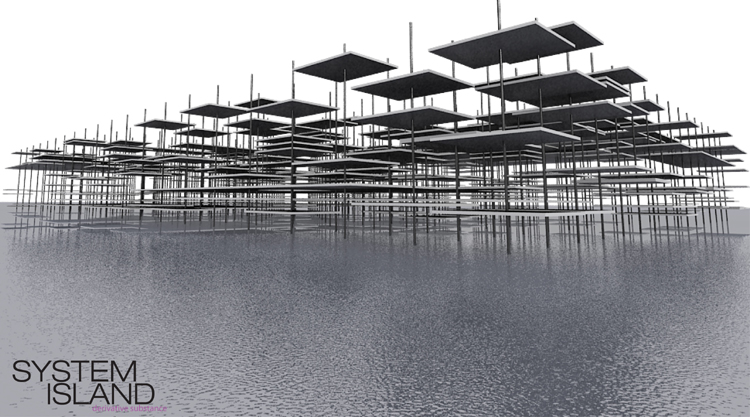 Space at once has no entity and many entities: A system that creates many entities, expanding a state of nothingness to limitless space. Its components, the simplest of forms, also have nothing.
Space at once has no entity and many entities: A system that creates many entities, expanding a state of nothingness to limitless space. Its components, the simplest of forms, also have nothing.
It is a deviation from different internal and external factors, such as the user and the surrounding, through which the space is turned from a state of nothingness to a derivative with limitless potential.
The space, transforming itself as needed, is able to expand into another space, with its functions present or absent by the moment. It is a space with no will of its own, no movement or form, possessing only potential, without spatial formation or functions. And driven by internal and external factors, it begins another round of derivation, developing will where there was none, becoming a space that has everything.
PRIZE OF EXCELLENCE
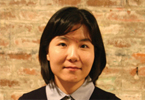
Kim Mi-hyun
Sangmyung University Graduate School of Culture&Art
OUTSIDE IN, INSIDE OUT
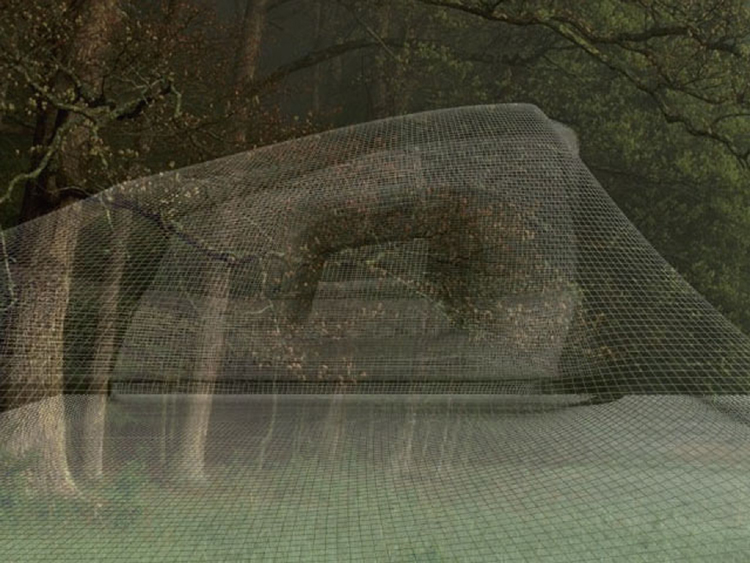 The human building activity begins with the need to secure a living territory. If the outside of a building is a space for movement, the inside is for settlement. The architecture is not a concept separate from nature; it is integrated as one with nature.
The human building activity begins with the need to secure a living territory. If the outside of a building is a space for movement, the inside is for settlement. The architecture is not a concept separate from nature; it is integrated as one with nature.
Unlike in the past, where the objects present within the space were objectively recognized, the phenomenalistic view that they must be subjectively recognized is gaining weight. Thus, a continuity emerges across spatial boundaries, based on the belief that internal and external spaces are not mutually contradictory, but are the reaction to the same action. The method of implementing such a fluid concept of space was found in "Klein's bottle." The spatial flow and visual transparency render the separation between outside and inside space meaningless, creating a mutually flexible overlapping space that transcends the dichotomy of the two spaces.
All occurrences on the surface of Klein's bottle, where there are no boundaries between dimensions, flow through one surface. The outer and inner spaces, defined as contradictory (natural vs. artificial) in the modern era, have been virtually integrated applying IT technology on the surface. Seamlessly combining spaces of different nature (settlement vs. movement) it plays on the contradiction of the outside and inside existing together, and gives rise to another seeming contradiction, that there is no boundary separating between the two.
With the surface flow, people can overcome the concept of outside vs. inside, and feel the outside from the inside and display inside behavior at the outside. Perhaps what we believe as an "inside" or as an "outside" is a space that defies any such definition
SPECIAL PRIZE

Choi Kyung-cheol,
Choi Jin-man,
Lee Hyun-seoung
Kyunghee University
SEED_GROWTH SPACE
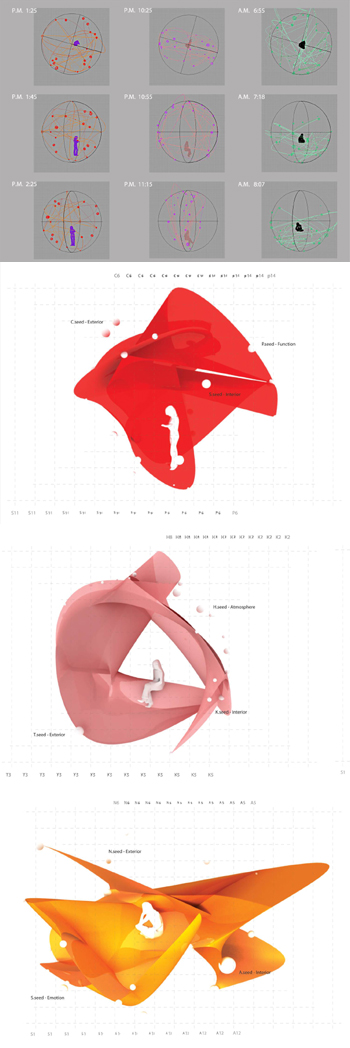 Remember Pinocchio? Created as a wooden figure, he becomes a human being. By learning to move, he begins to develop an understanding, becoming almost human with his understanding of human emotions. This is what the next-generation space of Seed Growth is all about. As we grow from children to adults, we are influenced by and influence the surrounding space.
Remember Pinocchio? Created as a wooden figure, he becomes a human being. By learning to move, he begins to develop an understanding, becoming almost human with his understanding of human emotions. This is what the next-generation space of Seed Growth is all about. As we grow from children to adults, we are influenced by and influence the surrounding space.
The space evolves so that it fits the people, each with his or her unique personality, and the surrounding environment. That an inhuman object can grow appears to be magic. But with the possibilities presented by today's technology, that magic is not far-fetched. It may be manifested through the IT products that we are currently using.
The micro-sized devices contain an unimaginable amount of data, facilitating movement and exchange. The data so contained represents more than a mere aggregate of data. The IT products also hold my time and memories. Purchased as simple objects, these products become part of my life, as the data generated from me holds the emotions and records of my life at certain moments. And each product has unique characteristics. From the products that appeal to and enable the five human senses, we can see the manifestation of many different seeds.
Each seed has a different set of movements, in accordance with the manifested characteristics. It could be only one seed germinating, or two or three different seeds germinating at different axes and forms. The seeds germinate independently, but are connected with each other through interaction between humans and environment, generating movement in other seeds, creating flexibility and diverse space.
Such movements of seeds have been specified and implemented here within a limited scope, called the one-person settlement space. A number of seeds are changing and growing according to the daily lifecycle of a woman. The changes come slowly, not in reaction to momentary stimulation, but as accumulation of a person's lifecycle, eventually creating a sustainable space for a person.
In a broader sense, the space grows with a person's whole life, storing information along the way. In the end, it reverts to one seed, becoming a space, like the urn that contains the information of the person it grew with.
HONORABLE MENTION
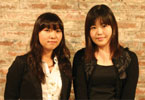
Lim Hye-ran, An Soon-young
Seoul Institute of the Arts
COMMUNICATION WITH THE PIVOT
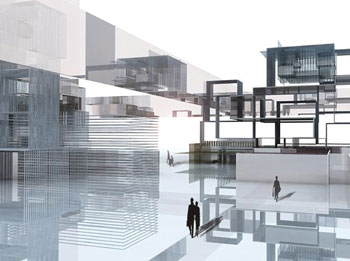
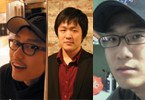
Jeong Min-hee, Jeon Jun-young, Jang Yong-hwan
Sangmyung University
BLACK SHADE
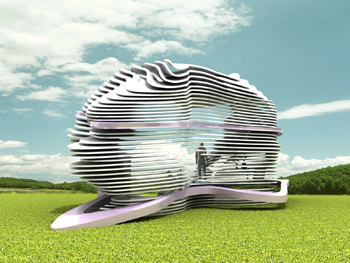
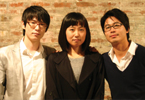
Kim Young-sam, Choi Da-hee, Lee Hyun-woo
Semyung University
I.O
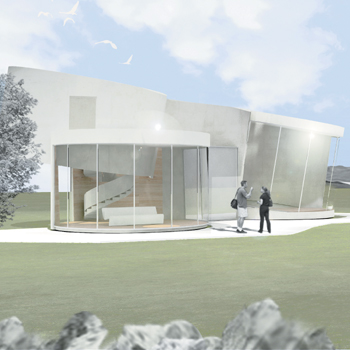
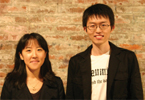
Jang Young-ki, Oh In-sun
Myongji University
CIRCULATION
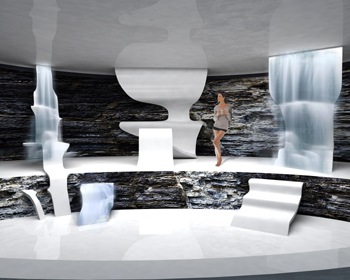

Jeong Sang-cheol
Ansan College Of Technology
INCUBATOR
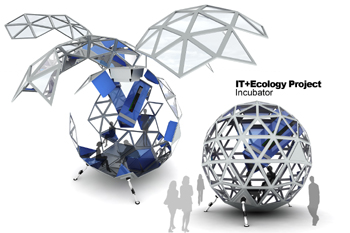
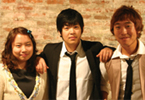
Lee Jun-bum, Cho Ho-yeol, Jung Mi-kyung
Sangmyung University
IF
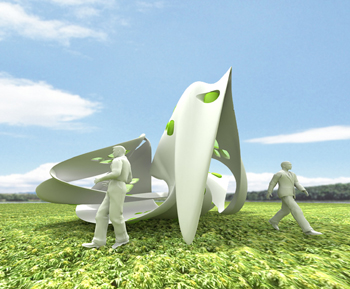
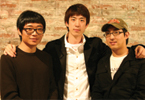
Kim Hyung-jun, Kim Jae-hyun, Jung Boo-moon
Daegu University
SPACE SOAKS INTO NATURE
